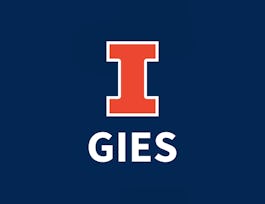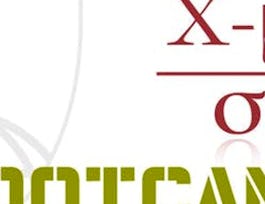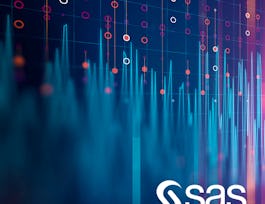This course is your comprehensive guide to mastering regression analysis and modeling using STATA. Starting with an introduction to the basics of linear regression, it takes you through essential concepts such as ordinary least squares, best linear unbiased estimators, and the crucial Gauss-Markov assumptions. You will also explore the difference between causality and correlation, learning how to apply these concepts practically in STATA with real-world examples. By the end of the linear regression module, you’ll be equipped with a deep understanding of regression analysis fundamentals.



The STATA OMNIBUS: Regression and Modelling with STATA

Dozent: Packt - Course Instructors
Bei  enthalten
enthalten
Empfohlene Erfahrung
Was Sie lernen werden
Identify the fundamental concepts of linear and non-linear regression in STATA.
Explain the purpose and assumptions of various regression models.
Perform regression analysis using STATA and interpret the results accurately.
Examine regression outputs to identify issues like multicollinearity and endogeneity.
Kompetenzen, die Sie erwerben
- Kategorie: data analysis with STATA
- Kategorie: non-linear regression STATA
- Kategorie: econometrics STATA
- Kategorie: STATA regression
- Kategorie: linear regression STATA
Wichtige Details

Zu Ihrem LinkedIn-Profil hinzufügen
Oktober 2024
7 Aufgaben
Erfahren Sie, wie Mitarbeiter führender Unternehmen gefragte Kompetenzen erwerben.


Erwerben Sie ein Karrierezertifikat.
Fügen Sie diese Qualifikation zur Ihrem LinkedIn-Profil oder Ihrem Lebenslauf hinzu.
Teilen Sie es in den sozialen Medien und in Ihrer Leistungsbeurteilung.

In diesem Kurs gibt es 21 Module
In this module, we will introduce STATA as a powerful tool for statistical analysis and data modeling. You'll gain a basic understanding of its interface and features, setting the stage for the advanced regression techniques covered in later sections.
Das ist alles enthalten
1 Video1 Lektüre
In this module, we will explore the essentials of linear regression, focusing on its importance in data analysis and statistical modeling. You will learn about key concepts such as the lines of best fit, OLS estimation, and the Gauss-Markov assumptions, with practical examples in STATA to reinforce the theoretical knowledge.
Das ist alles enthalten
26 Videos
In this module, we will dive into the world of non-linear regression, explaining its importance in modeling complex relationships. You will explore techniques like maximum likelihood estimation, Logit, and Probit models, along with practical STATA applications to handle real-world, non-linear data scenarios.
Das ist alles enthalten
22 Videos1 Aufgabe
In this module, we will focus on refining your regression modeling skills. You will learn how to model non-linear relationships, apply interaction effects, and incorporate time dynamics in regression models. Additionally, we’ll address practical challenges such as multicollinearity and missing data, providing hands-on STATA examples for each concept.
Das ist alles enthalten
14 Videos
In this module, we will introduce you to the fundamentals of using STATA. You will become familiar with its interface, learn how to use the help function, and understand the basic command syntax. Additionally, we will cover essential file management practices like working with .do files and importing data for your analyses.
Das ist alles enthalten
7 Videos
In this module, we will explore techniques to effectively view and summarize raw data in STATA. You'll learn how to deal with missing values, create tables, and conduct distributional analysis. Additionally, we will introduce the use of weights to refine data interpretation in statistical modeling.
Das ist alles enthalten
6 Videos1 Aufgabe
In this module, we will cover essential techniques for manipulating data in STATA. You'll learn how to recode, generate, and label variables, handle string data, and combine datasets. Additionally, we will explore the use of macros, loops, and subscripting over groups to streamline your data management workflow.
Das ist alles enthalten
14 Videos
In this module, we will focus on visualizing data using STATA's powerful graphing tools. You will learn how to create different types of charts and graphs, customize their appearance, and combine them for clearer data interpretation. Special topics include graphing distributions, jittering scatter plots, and visualizing interaction effects.
Das ist alles enthalten
15 Videos
In this module, we will examine techniques for testing relationships and differences in data. You'll learn how to test associations between categorical variables, conduct mean comparison tests, and explore correlations. We will also cover ANOVA to help you analyze variance across different groups using STATA.
Das ist alles enthalten
4 Videos1 Aufgabe
In this module, we will explore linear regression in depth, focusing on OLS regression, factor variables, and hypothesis testing. You'll learn how to present and graph regression estimates, as well as apply advanced methods like Oaxaca decomposition and constrained linear regression. Practical examples in STATA will reinforce these concepts.
Das ist alles enthalten
11 Videos
In this module, we will focus on categorical choice models, starting with binary choice models like Logit and Probit regression. You'll learn how to perform diagnostics and interpret the outputs, and explore more advanced techniques such as ordered and multinomial choice models for multi-category outcomes.
Das ist alles enthalten
3 Videos
In this module, we will examine models designed for fractional and proportional variables. You will learn how to implement fractional logit and beta regression in STATA, along with zero-inflated beta regression for datasets containing many zero values, providing a robust approach to analyzing proportion data.
Das ist alles enthalten
1 Video
In this module, we will explore the generation of random numbers and simulation techniques in STATA. You will learn how to create simulated datasets, analyze violations of key statistical assumptions, and apply Monte Carlo simulations to assess model behavior under various scenarios.
Das ist alles enthalten
4 Videos
In this module, we will delve into count data models, exploring methods to analyze outcomes that represent counts. You’ll learn how to use Poisson and Negative Binomial regressions, along with specialized techniques like truncated, censored, and hurdle count regression to manage complex count data in STATA.
Das ist alles enthalten
5 Videos
In this module, we will introduce survival analysis, a key method for analyzing time-to-event data. You'll learn how to prepare survival datasets, perform descriptive statistics, and apply both non-parametric and parametric survival models. The module also covers Cox Proportional Hazards models and diagnostics to evaluate model performance in STATA.
Das ist alles enthalten
7 Videos1 Aufgabe
In this module, we will explore panel data analysis, focusing on handling data across time and individuals. You’ll learn how to prepare panel datasets, use lags and leads, and apply both linear and non-linear panel estimators. Additionally, we will cover the Hausman test to determine the appropriate model for your data.
Das ist alles enthalten
6 Videos
In this module, we will focus on Difference-in-Differences (DiD) analysis, a powerful tool for causal inference in observational studies. You’ll learn how to estimate treatment effects, examine the parallel trend assumption, and apply alternative methods when this assumption does not hold, all within the STATA environment.
Das ist alles enthalten
3 Videos
In this module, we will explore instrumental variable regression techniques, which are crucial for addressing endogeneity in regression analysis. You’ll learn how to implement IV regression, manage models with multiple endogenous variables, and apply non-linear IV regression. We will also cover Heckman selection models to account for sample selection bias in STATA.
Das ist alles enthalten
4 Videos1 Aufgabe
In this module, we will explore epidemiological table analysis, focusing on rate data, cumulative incidence, and case-control studies. You’ll learn how to handle different types of case-control data, including those with multiple exposures and matched designs, using STATA’s epidemiological tools.
Das ist alles enthalten
5 Videos
In this module, we will focus on the essentials of power analysis, a critical step in study design. You will learn how to calculate required sample sizes, understand the role of power and effect size in statistical testing, and apply these concepts in the context of simple regression analysis using STATA.
Das ist alles enthalten
3 Videos
In this module, we will introduce basic matrix operations in STATA, essential for more advanced statistical analysis. You will learn how to execute matrix functions, utilize sub-scripting, and apply these operations to real data, enhancing your ability to handle complex data structures efficiently.
Das ist alles enthalten
4 Videos2 Aufgaben
Dozent

von
Empfohlen, wenn Sie sich für Data Analysis interessieren

University of Illinois Urbana-Champaign

Johns Hopkins University

Johns Hopkins University
Warum entscheiden sich Menschen für Coursera für ihre Karriere?





Neue Karrieremöglichkeiten mit Coursera Plus
Unbegrenzter Zugang zu 10,000+ Weltklasse-Kursen, praktischen Projekten und berufsqualifizierenden Zertifikatsprogrammen - alles in Ihrem Abonnement enthalten
Bringen Sie Ihre Karriere mit einem Online-Abschluss voran.
Erwerben Sie einen Abschluss von erstklassigen Universitäten – 100 % online
Schließen Sie sich mehr als 3.400 Unternehmen in aller Welt an, die sich für Coursera for Business entschieden haben.
Schulen Sie Ihre Mitarbeiter*innen, um sich in der digitalen Wirtschaft zu behaupten.
Häufig gestellte Fragen
Yes, you can preview the first video and view the syllabus before you enroll. You must purchase the course to access content not included in the preview.
If you decide to enroll in the course before the session start date, you will have access to all of the lecture videos and readings for the course. You’ll be able to submit assignments once the session starts.
Once you enroll and your session begins, you will have access to all videos and other resources, including reading items and the course discussion forum. You’ll be able to view and submit practice assessments, and complete required graded assignments to earn a grade and a Course Certificate.


